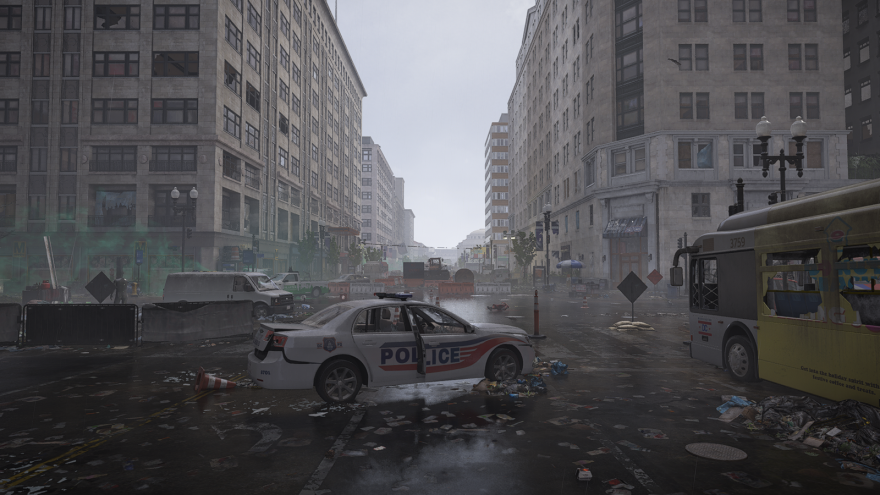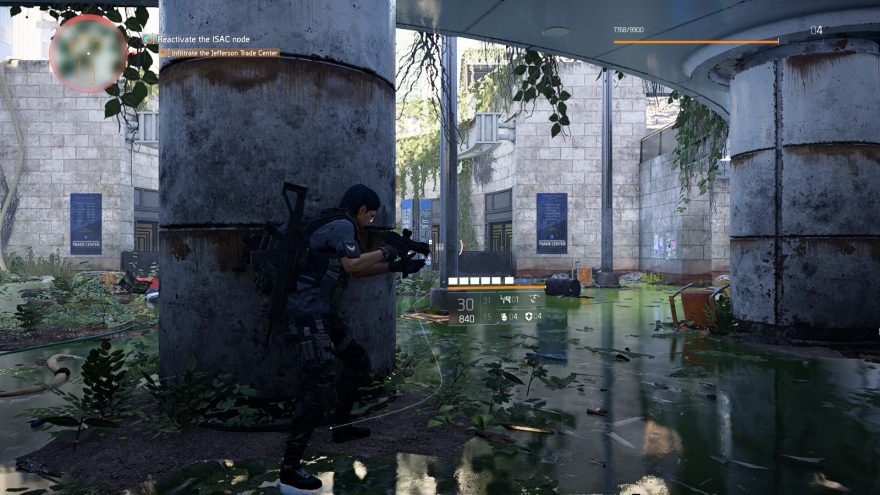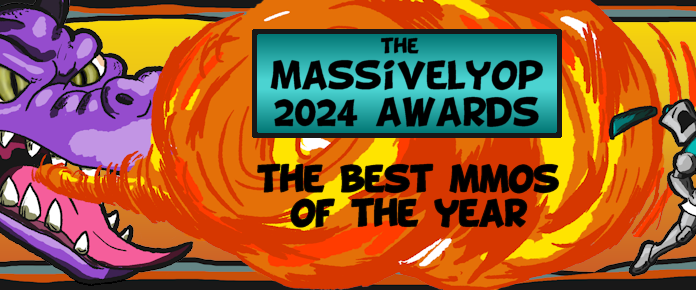
The Division was a game with a number of flaws, but one thing it did very well was present an incredibly detailed, realistic, and immersive game world. That endeared me to the franchise enough to want to check out the sequel.
But what I’ve found is that while The Division 2 fixes some of the flaws of the original, it’s also lost some of what made its predecessor special.
I’ll say this upfront: The Division 2 is very, very similar to the first game, to the point that at times it feels more like a large DLC than a true sequel. The core gameplay is almost entirely unchanged.
The most obvious change is the difference in setting. Instead of New York in the winter, you’re now fighting in Washington, D.C., in the spring. I’m probably the only person in the world who feels this way, but as a lover of the winter months, I actually find this change makes the setting feel much more bleak and oppressive. It’s not endearing.
There are a couple of improvements I appreciate. For me, the best new addition is a true character creator. The original game’s character creation options were so limited I wondered why Ubisoft bothered including them at all.
The Division 2‘s character creation is certainly not approaching Black Desert Online levels of depth, but it does have a pretty robust selection of options, including facial sliders and some pretty cool tattoo options. I’m far too pleased with the rat tattoo on my agent’s neck.
 Another positive change is a greater variety of active skill options. Skills are now arranged into “platforms” that serve as delivery systems for the effects — such as a flying drone or a stationary hive of nano bots — but each has a wide selection of different effects to choose from. Your drone can fire at enemies, bomb them, deflect bullets, or repair your allies’ body armor.
Another positive change is a greater variety of active skill options. Skills are now arranged into “platforms” that serve as delivery systems for the effects — such as a flying drone or a stationary hive of nano bots — but each has a wide selection of different effects to choose from. Your drone can fire at enemies, bomb them, deflect bullets, or repair your allies’ body armor.
One of the major flaws of the original game was a severe lack of character customization, both visually and mechanically, but The Division 2 has gone a long way toward fixing that.
Another interesting new addition is the ability to call for back-up. As before, the open world is a solo instance unless you choose to invite other players, but now you can at any time issue a call for back-up, which will trigger a notification for any nearby players. They can then choose to respond to your call, immediately grouping up with you and joining your instance. It’s a really clever way to make the game more social without forcing it on people.
On the other hand, though, The Division 2 has also lost some of what made the original special.
Playing through it, I realized that a main development goal for The Division 2 seems to have been to create a bigger, bolder game with more to do and more rewards. Under most circumstances, that would be a good thing, but in this case is kind of clashes with the identity of the IP.
Two things struck me out of the gate when I started playing the original game. One was how empty the game world felt, and the other was how OK with that I was.
 Both games take place in the aftermath of a devastating viral outbreak. The first game captured that fantasy beautifully. The detail of the game world made it feel real. The relative lack of loot captured the feeling of scarcity and salvaging for survival (and made it really exciting when you did find something good). The empty spaces felt haunting and lonely.
Both games take place in the aftermath of a devastating viral outbreak. The first game captured that fantasy beautifully. The detail of the game world made it feel real. The relative lack of loot captured the feeling of scarcity and salvaging for survival (and made it really exciting when you did find something good). The empty spaces felt haunting and lonely.
That ambiance is what made the first game feel special to me. That’s what made me want to keep playing despite its being a fairly generic title otherwise.
In The Division 2, you can’t go 10 feet without finding a lootable container. There are side missions, control points, and other activities on almost every street corner. Washington feels less like a dead city and more like an active warzone. Loot is some common it no longer feels special. In contrast to the realism of the original, it’s a much more gamified experience.
I’m also very disappointed I can no longer gift food and supplies to wandering civilians. That added such flavor to the original. We can donate bulk supplies to civilian encampments, but it doesn’t have the same emotional kick.
These may seem like minor complaints, and they are, but the immersive ambiance is the only thing that made The Division special, made it more than just another generic shooter. Anything that jeopardizes that, even slightly, is cause for concern.
 Some of the flaws of the original are still present, too. There remain issues with the difficulty tuning. Main story missions don’t seem quite so intense this time, but some open world content remains very painful when you’re trying to solo.
Some of the flaws of the original are still present, too. There remain issues with the difficulty tuning. Main story missions don’t seem quite so intense this time, but some open world content remains very painful when you’re trying to solo.
Speaking of the main story, it’s… it’s not good, guys. Now, I am still fairly early in the game, so it might get better (the original’s did become far more interesting by the end), but so far the plot is so thin I’m not even sure why it’s there. I barely know who the characters I’m interacting with are, and I have no idea what our mission is supposed to be beyond “shoot bad guys.” I’m not invested on any level.
At least there’s less blatant racism this time.
At the end of the day, though, this is a very familiar experience. The Division 2 is slightly better than the first in some areas, and slightly worse in others. If you enjoyed the original, you’ll probably enjoy its sequel. If you didn’t enjoy the original, the sequel isn’t going to change your mind.
 The world of online gaming is changing. As the gray area between single-player and MMO becomes ever wider, Massively OP’s Tyler Edwards delves into this new and expanding frontier biweekly in Not So Massively, our column on battle royales, OARPGs, looter-shooters, and other multiplayer online titles that aren’t quite MMORPGs.
The world of online gaming is changing. As the gray area between single-player and MMO becomes ever wider, Massively OP’s Tyler Edwards delves into this new and expanding frontier biweekly in Not So Massively, our column on battle royales, OARPGs, looter-shooters, and other multiplayer online titles that aren’t quite MMORPGs.












